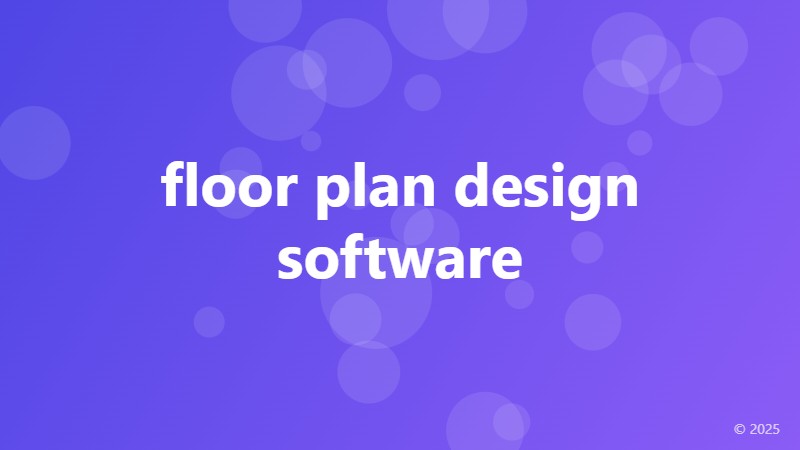floor plan design software
 Here is the article:
Here is the article:
Revolutionize Your Design Process with Floor Plan Design Software
Floor plan design software has transformed the way architects, designers, and builders work. Gone are the days of manual drafting and tedious revisions. With the advent of technology, design professionals can now create, modify, and share floor plans with ease and accuracy. In this article, we'll explore the benefits and features of floor plan design software and how it can streamline your design process.
Key Features of Floor Plan Design Software
A good floor plan design software should have an intuitive interface, a comprehensive library of symbols and objects, and advanced editing tools. Some of the key features to look for include:
- 2D and 3D design capabilities
- Drag-and-drop functionality for easy object placement
- Real-time collaboration and commenting tools
- Auto-save and version control features
- Compatibility with various file formats, including DWG and PDF
Benefits of Using Floor Plan Design Software
The benefits of using floor plan design software are numerous. Some of the most significant advantages include:
Increased accuracy and precision: By automating the design process, you can minimize errors and ensure that your floor plans are accurate and up-to-date.
Improved collaboration: Real-time collaboration tools allow multiple stakeholders to work together seamlessly, reducing misunderstandings and miscommunications.
Enhanced visualization: 2D and 3D visualization capabilities enable you to present your designs in a more engaging and interactive way, making it easier to communicate your vision to clients and stakeholders.
Choosing the Right Floor Plan Design Software for Your Needs
With so many floor plan design software options available, choosing the right one can be overwhelming. Here are some factors to consider when selecting a software:
Scalability: Consider the size and complexity of your projects and choose a software that can handle your needs.
Ease of use: Opt for a software with an intuitive interface that is easy to learn and use, even for those without extensive design experience.
Integration: Ensure that the software integrates seamlessly with other tools and platforms you use in your design process.
Cost: Evaluate the cost of the software and consider whether it fits within your budget.
By taking the time to research and compare different floor plan design software options, you can find the perfect tool to streamline your design process and take your projects to the next level.